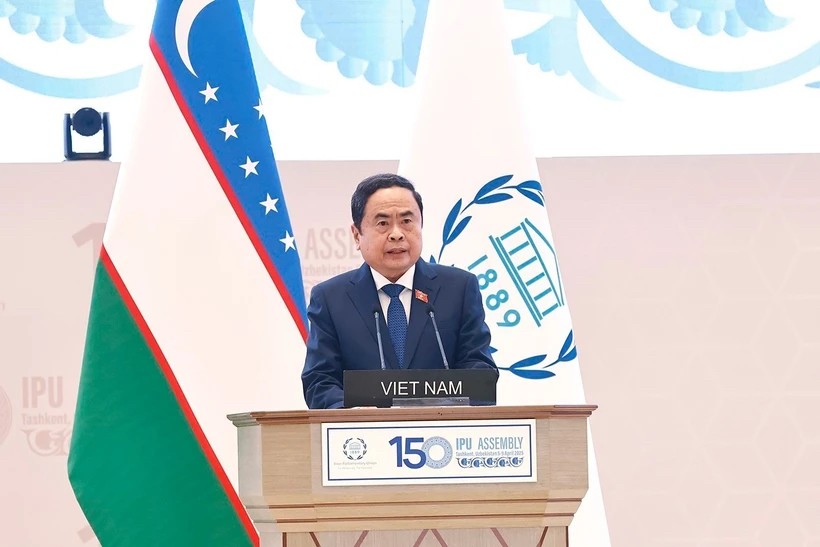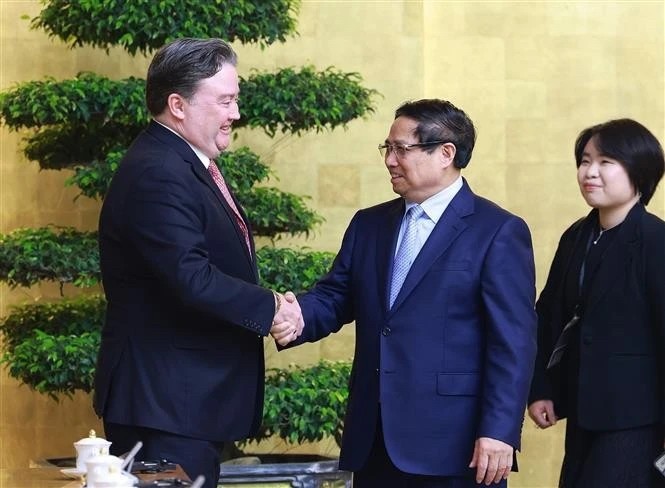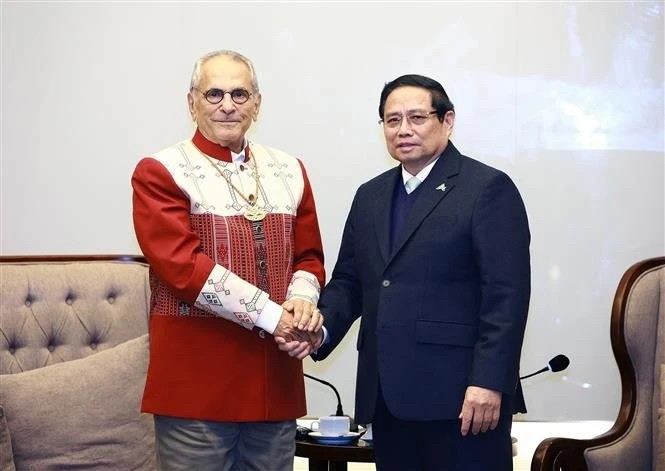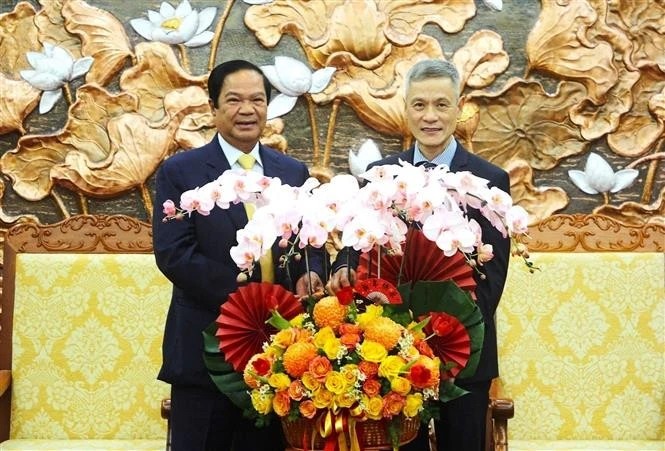RCEP Creates New Growth Momentum For Vietnamese Trade
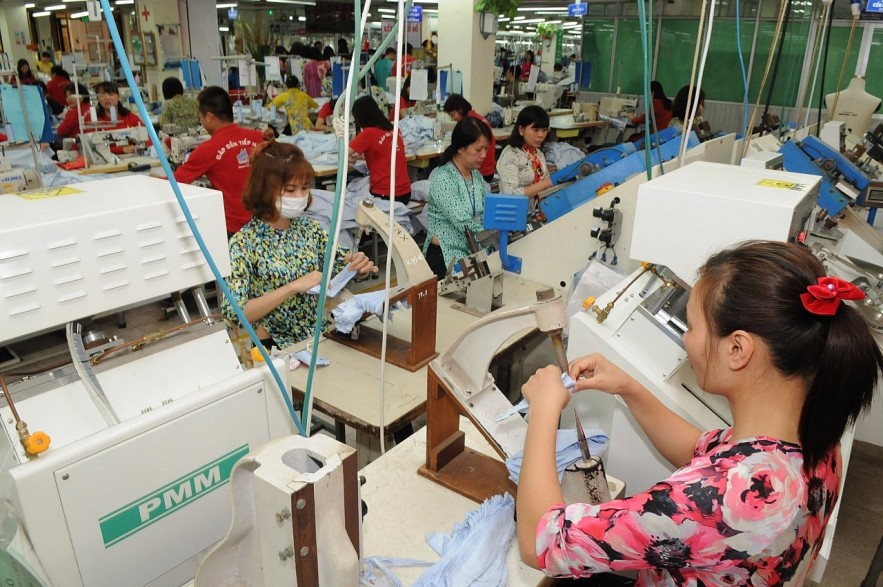 |
| RCEP opens up many opportunities for Vietnam's textiles and garments. Photo: Can Dung |
The Regional Comprehensive Economic Partnership (RCEP) has 15 participating countries including 10 ASEAN member countries and China, Japan, the RoK, Australia, and New Zealand. From there, RCEP will form a new trade structure in the region, creating favorable conditions for countries to develop sustainably.
The partnership commits to opening markets for goods, services and investment, simplifying customs procedures and rules of origin to facilitate trade between countries in the bloc.
Experts assess that RCEP is a "huge" trade agreement, representing one of the largest free trade blocs in the world. Member countries account for about 30% of global gross domestic product, population and trade volume.
The RCEP serves as an important foundation for member countries to expand markets, attract investment and promote sustainable growth.
According to the Ministry of Industry and Trade, RCEP plays an important role in Vietnam's economic integration process.
In particular, the partnership helps Vietnam receive many benefits because countries participating in RCEP all have a need to import Vietnam's strong products such as agricultural products, textiles, footwear, and wood products.
RCEP creates new growth engines for international trade and forms new supply chains.
Currently, reports assessing the impact of RCEP all say that the partnership will bring positive impacts to the regional economy. Accordingly, by 2030, it will increase the income of the entire region by about 0.6%, equivalent to an annual increase of US$245 billion and create an additional 2.8 million jobs.
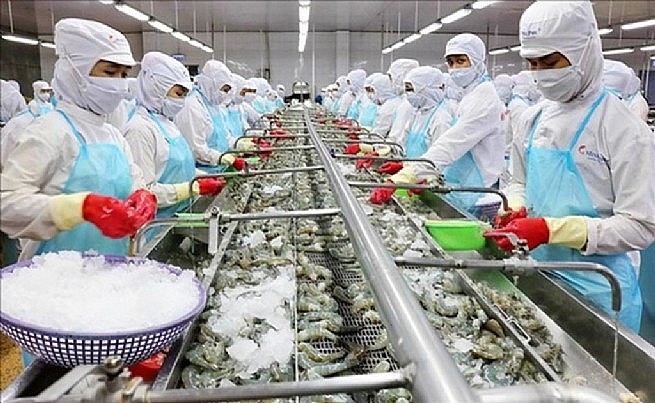 |
| Photo: vccinews |
For Vietnam, recent studies show that Vietnam will benefit a lot from RCEP. The World Bank's 2022 study forecasts that Vietnam's GDP will increase by about 4.9% and exports will increase by 11.4% by 2030.
According to the assessment report on the impact of RCEP (by Park et al. in 2021 and by the World Bank (WB) in 2022), RCEP can have a positive impact on the regional economy, in which export-oriented countries can benefit more.
Recent studies have shown that Vietnam has many opportunities from RCEP, with the WB forecast that Vietnam's GDP will increase by about 4.9% in 2022 and exports will increase by 11.4% by 2030.
Meanwhile, the rules of origin in RCEP may stimulate the import of intermediate goods into Vietnam, especially from China, creating disadvantages for the development of supporting industries and participation in the supply chain of Vietnamese enterprises.
As a member of RCEP, Vietnam has stable growth in import and export. In 2022, Vietnam's export turnover reached over US$730 billion, an increase of 9.1% compared to the previous year (equivalent to an increase of US$61.2 billion).
Merchandise export turnover in September 2023 is estimated to reach US$31.41 billion, down 4.1% over the previous month and up 4.6% over the same period last year. Overall, for the first 9 months of 2023, merchandise export turnover is estimated to reach US$259.67 billion, down 8.2% over the same period last year.
RCEP eliminates tariffs on nearly 90% of traded goods. This is a great advantage for Vietnamese businesses with large exports and imports from markets in the bloc.
RCEP will bring many opportunities for Vietnam's textile and garment industry. RCEP countries' markets provide a large source of imported raw materials for Vietnam's textile and garment industry. Therefore, when businesses expand the export of products to member countries, it will be advantageous in the rules of origin of goods.
Nguyen Thi Thu Trang, director of the World Trade Organization (WTO) and Integration Center at the Vietnam Chamber of Commerce and Industry (VCCI), said that the supply and intermediate sources of most products imported into Vietnam come from the RCEP region and the output of some products is also in this region.
When the entire supply chain is located in the same region and has a complete set of origins, it is an advantage for Vietnamese businesses to participate more effectively in global supply chains.
According to Trang, the biggest advantage that can be seen directly is the harmonization of rules of origin that can be taken advantage of in RCEP. There is synergy between RCEP and the 14 other FTAs that Vietnam has. Therefore, it is an opportunity, a good motivation for us to attract FDI.
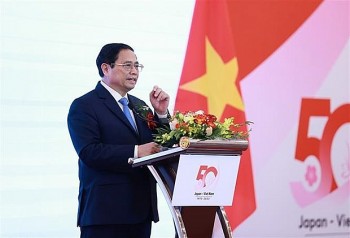 | Vietnam, Japan Enhance Cooperation in the Economy A delegation of Japanese economic organizations are in Vietnam to attend the Vietnam-Japan high-level economic conference. |
 | Vietnam Contributes Ideas on Economic Cooperation between ASEAN and Partners As the coordinator of ASEAN-EU relations, Vietnam coordinated the discussion on the implementation of work in the ASEAN-EU trade and investment work program for the ... |
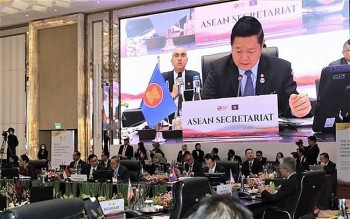 | ASEAN's Digital Economy Projected to Hit US$1 Trillion By 2030 A unified and robust regulatory mechanism can help ASEAN boost the potential value of the digital economy, which is expected to reach US$1,000-2000 million by ... |




